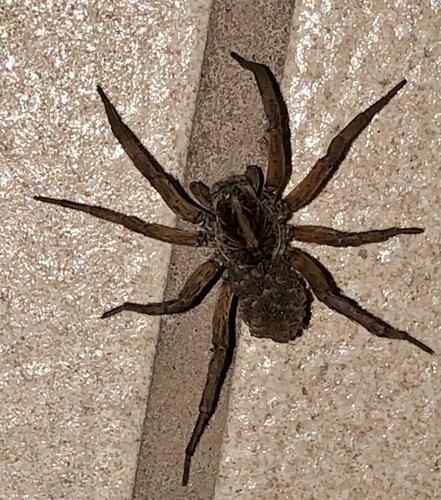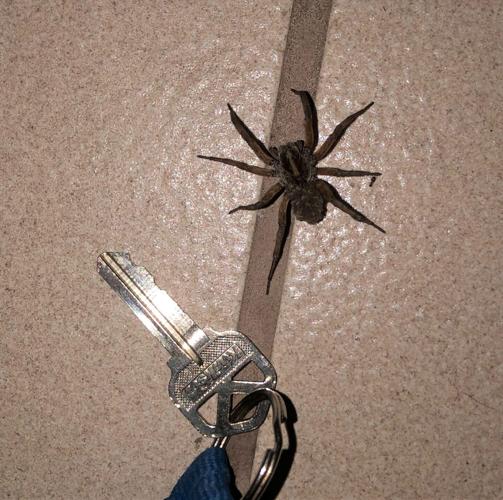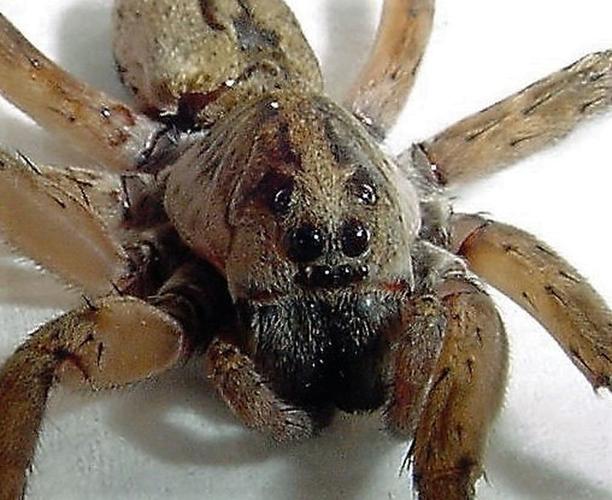Stepping out the front door, our dog alerted to something small underfoot. I assumed it was a gecko until I saw her. Luxuriously furred and heavily laden with young, her thick, powerful legs crouched in alarm. Before I could rein the dog in, the dingo stepped on her. Spiderlings swarmed out in an ant-like array as we pussyfooted around them and their bewildered parent. She would have to reassemble her family of 100-plus before moving on and I felt so bad about it.
With some 250 species in North America, wolf spiders are common and prolific. Varying in coloration, most are shades of black, brown or tan while a few match the whiter sands of our Lake Wales Ridge. Unlike orb weavers, these striped terrestrial hunters don’t spin webs to capture flying insects. Those long legs are used to run after prey on the ground, thus the moniker of “wolf” spider for that hunting prowess.
Our nocturnal visitor had already hatched her young, yet another difference from web spinning spiders. Where they create a hanging egg sac and leave the young to hatch alone, wolf spiders attach their egg sac to the back of their abdomen via their spinnerets. Much like a human with a baby in a backpack, momma spider carries this tough silken sac until the young hatch. Then like a possum, the young, a hundred or so, pile onto the upper surface of mom’s abdomen for traveling. They remain aboard for their first couple of weeks, then disperse to lead solitary lives.
I know she saw us coming when we stepped out our door that night because wolf spiders have excellent vision due to three rows of eyes. There are two large eyes with a second set of large eyes underneath these and yet four more smaller eyes underneath the upper four. Totaling eight eyes altogether, their configuration will help you identify her as a wolf spider if you dare to get so close.
Often misidentified as a brown recluse, wolf spiders are not dangerous but like most creatures may bite and envenomate if handled. When carrying their eggs sac or young they are a bit aggressive in protecting their offspring. If separated, the mother spider will be seen searching to snatch an egg sac back up again. Agile and reactive, they may jump toward you before escaping, causing some alarm. Don’t worry, she’s not out to get you but is merely seeking escape to get busy hunting.
Shine for spiders: Step outside after dark and hold a flashlight against your temple looking along the beam of light into grassy areas. The eyes of wolf spiders will sparkle back at you.









